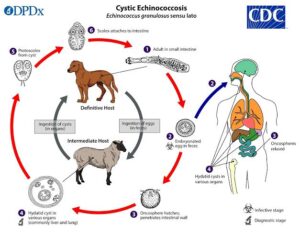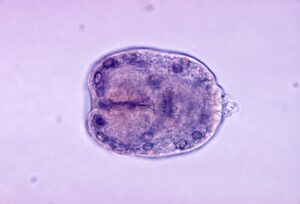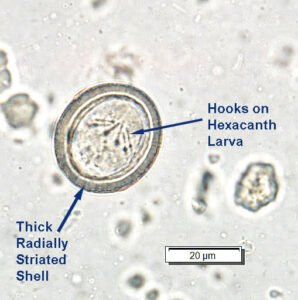Back to: MICROBIOLOGY 300 LEVEL
Welcome to class!
Hello there, superstar learner! I’m really glad you showed up today—ready with your mind open and your curiosity alive. Today, we’re continuing our fascinating journey into the world of parasites, focusing on a group that’s flat, long, and very tricky. These are called cestodes, and the key players we’ll look at are Taenia spp. and Echinococcus. These are tapeworms—some of the sneakiest parasites around—and you’ll soon see how they operate and why they matter.
Cestodes: Taenia Spp., Echinococcus
Cestodes, also known as tapeworms, are flat, ribbon-like worms that live in the intestines of humans and animals. Unlike nematodes, they don’t have a digestive system—they just absorb nutrients straight from their host’s food. That’s like having an uninvited guest who eats your food but never leaves!

Cestode infections usually happen when people eat undercooked or contaminated meat, or come in contact with infected animals. Let’s break it down.
Taenia spp. (Taenia solium and Taenia saginata)
These are the most well-known tapeworms that infect humans.
Taenia saginata (beef tapeworm) is contracted by eating undercooked beef.
Taenia solium (pork tapeworm) comes from eating undercooked or raw pork.
Life Cycle:
Eggs or larvae are found in contaminated food.
When humans eat infected meat, the larvae mature into adult tapeworms in the intestines.
The tapeworm attaches to the intestinal wall with suckers and hooks.
It grows by adding segments called proglottids, which contain eggs and are passed out in faeces.
Symptoms:
Mild or no symptoms in light infections.
Abdominal discomfort, weight loss, or appetite changes.
Seeing tapeworm segments in faeces or underclothes.

Special Case – Taenia solium and Neurocysticercosis:
If the eggs of T. solium (not the meat) are swallowed directly, they can travel to the brain and form cysts—a dangerous condition called neurocysticercosis, leading to seizures and other neurological problems.
This is common in areas with poor sanitation and pig farming.
Echinococcus spp.
A smaller tapeworm, often found in dogs and wild animals.
Humans are accidental hosts, usually infected by contact with dog faeces or contaminated food/water.
The eggs hatch and travel to organs like the liver or lungs, forming large fluid-filled hydatid cysts.
These cysts can grow over years and cause serious problems if they burst.

Picture this: you’re enjoying a delicious meat pie at a roadside shop, but the meat inside wasn’t cooked well. If it’s beef with tapeworm larvae, those worms could settle in your intestines, quietly growing longer each day. Or imagine playing with your dog, then forgetting to wash your hands before eating. That’s how Echinococcus can sneak in—using your body as a hiding place.
Summary
- Cestodes are flatworms that live in the intestines.
- Taenia spp. (beef and pork tapeworms) are transmitted by eating undercooked meat.
- T. solium can also cause neurocysticercosis if its eggs are swallowed.
- Echinococcus causes hydatid disease by forming cysts in internal organs.
- Prevention includes proper meat cooking, handwashing, and good animal hygiene.
Evaluation
- What is the difference between Taenia saginata and Taenia solium?
- How do humans get infected with Echinococcus?
- What is neurocysticercosis, and which parasite causes it?
- List two symptoms of tapeworm infection.
- Mention two ways to prevent cestode infections.
You’ve done something powerful today—gained knowledge that can help protect families and communities from some serious infections. Keep going strong! Afrilearn believes in your brilliance, and we’re right here to help you learn, grow, and shine. See you in the next class, champ!
